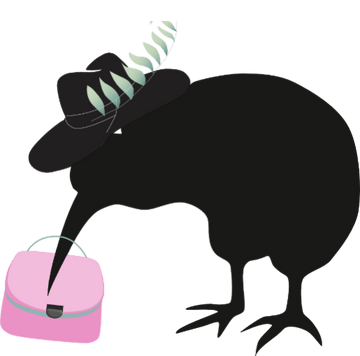Can You Interface Vinyl Fabric And Faux Leather, When To Do It And How To Do It. Do It.
I am making a bag. Do I need to interface the vinyl?
How To Interface Vinyl And Faux Leather For Bag Making
You do not always need to interface vinyl and faux leather when you are making a bag. Whether or not you do, depends on the type of bag you are making and the vinyl or faux that you have chosen for it.
Thicker vinyl is often fine without any interfacing. But if you are using it for a really sturdy bag, and the pattern calls for foam or fleece then you may need to attach that.
Thinner faux leathers don’t necessarily need to be interfaced either, unless you feel you need a little extra body or you are cutting across the grain and want to minimise any chance of stretching. For instance, I would always recommend interfacing long straps on a bag made form thinner faux leather.
To do this, cut a piece of medium weight fusible interfacing to the same length as the finished strap and 1/4 or 25% of the width. (If you are planning to sew the ends of your straps inside, cut the seam allowance from the two ends.)
Fuse the interfacing to one of the outside edges of the strap piece, then proceed as normal for making a strap. (See image below)
Fold the long sides of your straps to the centre line, then fold in half. Sew the strap together. DON'T fuse the interfacing down the middle, or one side of your finished strap will have two layers of interfacing and the other side will have none.

Placement of a strip of interfacing along a strap edge to reinforce it and eliminate any stretch
The lining you choose for your bag can also determine whether or not you need to interface. If you are using a heavier lining fabric for your bag making project, such as canvas, cotton Duck or waterproof canvas, (WPC), you probably don’t need to interface your faux as the exterior fabric. But if you are using light weight quilting cotton then you should consider it.
Depending on how much structure you require you might choose between medium woven fusible interfacing such as Shape to Create, through fleece to Decovil light or heavy or even foam.

The Mountain Saddle Bag. Vinyl and PU leather, stabilized with both foam and Decovil light to give a very firm and structured look and feel.
How do I interface vinyl?
Most vinyl can be interfaced the same way as other fabrics. However, you should check a scrap first to make sure it can withstand the iron temperature.
- ALWAYS TEST on a scrap of fabric first as results will depend on your iron setting and the type/brand of interfacing used.
- Make sure that your pressing mat/ironing board is cool before you start.
- Place the fabric leather side down with the fusible interfacing glue side down on top
- Place a pressing cloth over the top such as our silk organza pressing cloth which will allow you to see what you are doing.
- Using an iron set to a medium temperature, press down gently on the fabric for 15-20 seconds, or according to your interfacing instructions, before moving on. Repeat a few times but check the fabric is not getting too hot.
- Allow the leather to cool completely, up to 30 minutes and check the bond. Repeat if necessary.
(Note the use of an ironing press may flatten the embossed pattern, so test this first).
How to attach stabilizers such as foam, Decovil, Peltex or fusible fleece to vinyl.
If you are sewing on an industrial machine and think you are able to cut enough out of the seam allowances, without the finished seams looking thick or lumpy, then follow the usual pattern instructions of sewing it to the vinyl and trimming the excess.
If you are sewing on a domestic sewing machine, or you are worried about lumpy seams, you will need to cut the seam allowances from the stabilizer. (Note many patterns will advise this anyway)
Now, because you are cutting the seam allowances away, the stabilizer will not be sewn into the seams. If it later loses its adhesion to the exterior fabric, it will drop off and move around freely between the bag outer and the lining. To prevent this, you should apply a lighter weight or medium woven fusible interfacing as well.
Follow these steps:
- Cut the seam allowances from the foam, fleece, Peltex or Decovil.
- Position the stabilizer centrally onto the wrong side of the vinyl, there will be a gap the width of the seam allowance all the way round.
- If it is a fusible stabilizer, like fleece or Decovil, fuse it to the vinyl where possible. If it is not fusible, like foam for instance, use a little double-sided tape to keep it in place and stop it from moving.
- Cut a piece of lightweight or medium fusible woven interfacing the same size as the pattern piece. Place this over the top of the stabilizer.
- Using a pressing cloth and an iron on a medium or wool temperature, fuse the interfacing to the vinyl/faux leather around all the edges on the seam allowances.
- Carefully repeat, fusing the interfacing to the stabilizer, if you are using one that can withstand the temperature – test first if necessary.
- Allow it to cool completely and check that it has good adhesion around the edges.
Interfacing heat sensitive vinyl
If you are concerned that the vinyl you are using cannot withstand the iron temperature, or if you prefer, use a spray on foam and fabric adhesive. Check that you have a really good bond before sewing up your project.

